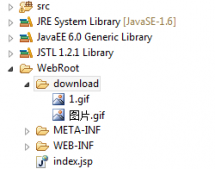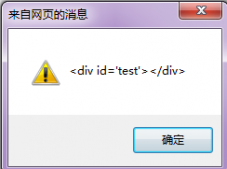1. 調(diào)試追蹤代碼:
|
1
2
3
4
5
6
7
8
9
10
11
|
public static void enterTryMethod() { System.out.println("enter after try field"); } public static void enterExceptionMethod() { System.out.println("enter catch field"); } public static void enterFinallyMethod() { System.out.println("enter finally method"); } |
2. 拋出Exception,沒有finally,當(dāng)catch遇上return
|
1
2
3
4
5
6
7
8
9
10
11
12
|
public static int catchTest() { int res = 0; try { res = 10 / 0; // 拋出Exception,后續(xù)處理被拒絕 enterTryMethod(); return res; // Exception已經(jīng)拋出,沒有獲得被執(zhí)行的機(jī)會(huì) } catch (Exception e) { enterExceptionMethod(); return 1; // Exception拋出,獲得了調(diào)用方法并返回方法值的機(jī)會(huì) } } |
后臺(tái)輸出結(jié)果:
|
1
2
|
enter catch field 1 |
3. 拋出Exception,當(dāng)catch體里有return,finally體的代碼塊將在catch執(zhí)行return之前被執(zhí)行
|
1
2
3
4
5
6
7
8
9
10
11
12
13
14
|
public static int catchTest() { int res = 0; try { res = 10 / 0; // 拋出Exception,后續(xù)處理被拒絕 enterTryMethod(); return res; // Exception已經(jīng)拋出,沒有獲得被執(zhí)行的機(jī)會(huì) } catch (Exception e) { enterExceptionMethod(); return 1; // Exception拋出,獲得了調(diào)用方法并返回方法值的機(jī)會(huì) } finally { enterFinallyMethod(); // Exception拋出,finally代碼將在catch執(zhí)行return之前被執(zhí)行 } } |
后臺(tái)輸出結(jié)果:
|
1
2
3
|
enter catch field enter finally method 1 |
4. 不拋出Exception,當(dāng)finally代碼塊里面遇上return,finally執(zhí)行完后將結(jié)束整個(gè)方法
|
1
2
3
4
5
6
7
8
9
10
11
12
13
14
15
|
public static int catchTest() { int res = 0; try { res = 10 / 2; // 不拋出Exception enterTryMethod(); return res; // 獲得被執(zhí)行的機(jī)會(huì),但執(zhí)行需要在finally執(zhí)行完成之后才能被執(zhí)行 } catch (Exception e) { enterExceptionMethod(); return 1; } finally { enterFinallyMethod(); return 1000; // finally中含有return語句,這個(gè)return將結(jié)束這個(gè)方法,不會(huì)在執(zhí)行完之后再跳回try或者catch繼續(xù)執(zhí)行,方法到此結(jié)束 } } |
后臺(tái)輸出結(jié)果:
|
1
2
3
|
enter after try field enter finally method 1000 |
5. 不拋Exception,當(dāng)finally代碼塊里面遇上System.exit()方法將結(jié)束和終止整個(gè)程序,而不只是方法
|
1
2
3
4
5
6
7
8
9
10
11
12
13
14
15
|
public static int catchTest() { int res = 0; try { res = 10 / 2; // 不拋出Exception enterTryMethod(); return res; // 獲得被執(zhí)行的機(jī)會(huì),但由于finally已經(jīng)終止程序,返回值沒有機(jī)會(huì)被返回 } catch (Exception e) { enterExceptionMethod(); return 1; } finally { enterFinallyMethod(); System.exit(0); // finally中含有System.exit()語句,System.exit()將退出整個(gè)程序,程序?qū)⒈唤K止 } } |
后臺(tái)輸出結(jié)果:
|
1
2
|
enter after try field enter finally method |
6. 拋出Exception,當(dāng)catch和finally同時(shí)遇上return,catch的return返回值將不會(huì)被返回,finally的return語句將結(jié)束整個(gè)方法并返回
|
1
2
3
4
5
6
7
8
9
10
11
12
13
14
15
|
public static int catchTest() { int res = 0; try { res = 10 / 0; // 拋出Exception,后續(xù)處理將被拒絕 enterTryMethod(); return res; // Exception已經(jīng)拋出,沒有獲得被執(zhí)行的機(jī)會(huì) } catch (Exception e) { enterExceptionMethod(); return 1; // Exception已經(jīng)拋出,獲得被執(zhí)行的機(jī)會(huì),但返回操作將被finally截?cái)? } finally { enterFinallyMethod(); return 10; // return將結(jié)束整個(gè)方法,返回值為10 } } |
后臺(tái)輸出結(jié)果:
|
1
2
3
|
enter catch field enter finally method 10 |
7. 不拋出Exception,當(dāng)finally遇上return,try的return返回值將不會(huì)被返回,finally的return語句將結(jié)束整個(gè)方法并返回
|
1
2
3
4
5
6
7
8
9
10
11
12
13
14
15
|
public static int catchTest() { int res = 0; try { res = 10 / 2; // 不拋出Exception enterTryMethod(); return res; // 獲得執(zhí)行機(jī)會(huì),但返回將被finally截?cái)? } catch (Exception e) { enterExceptionMethod(); return 1; } finally { enterFinallyMethod(); return 10; // return將結(jié)束整個(gè)方法,返回值為10 } } |
后臺(tái)輸出結(jié)果:
|
1
2
3
|
enter after try field enter finally method 10 |
結(jié)論
Java的異常處理中,程序執(zhí)行完try里面的代碼塊之后,該方法并不會(huì)立即結(jié)束,而是繼續(xù)試圖去尋找該方法有沒有finally的代碼塊
如果沒有finally代碼塊,整個(gè)方法在執(zhí)行完try代碼塊后返回相應(yīng)的值來結(jié)束整個(gè)方法
如果有finally代碼塊,此時(shí)程序執(zhí)行到try代碼塊里的return一句之時(shí)并不會(huì)立即執(zhí)行return,而是先去執(zhí)行finally代碼塊里的代碼
若finally代碼塊里沒有return或沒有能夠終止程序的代碼,程序在執(zhí)行完finally代碼塊代碼之后再返回try代碼塊執(zhí)行return語句來結(jié)束整個(gè)方法。若 finally 代碼塊里有 return 或含有能夠終止程序的代碼,方法將在執(zhí)行完 finally 之后被結(jié)束,不再跳回 try 代碼塊執(zhí)行 return
在拋出異常的情況下,原理也是和上面的一樣的,你把上面說到的 try 換成 catch 去理解就OK了。














